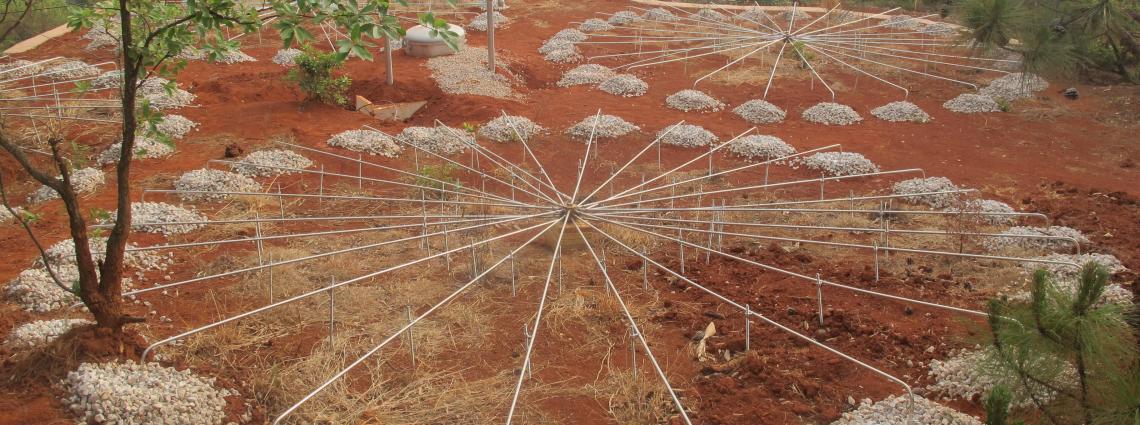Goodbye 2014, hello 2015!
January started with Zerbo's election as Arms Control Person of the Year by the Arms Control Association. Zerbo had been nominated for “helping to persuade China to provide data from its International Monitoring System stations to the International Data Centre (IDC) in Vienna and for providing real-time data regarding North Korea's third nuclear test explosion.” The same month, the Chinese monitoring stations started sending data to Vienna.
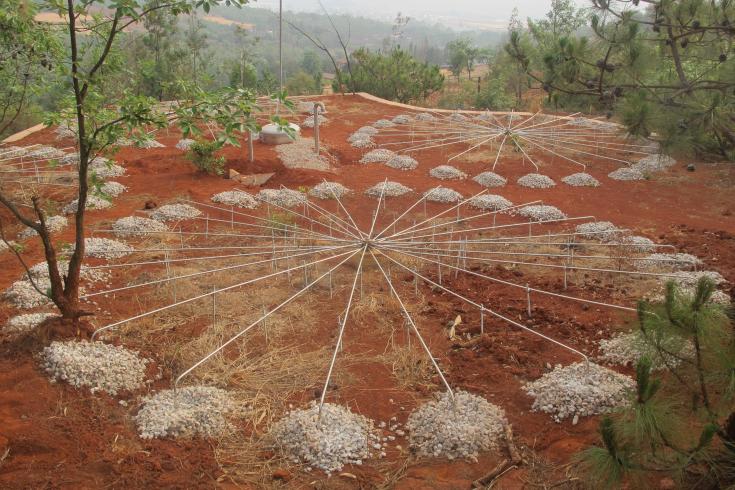
Array elements at infrasound station IS16 at Kunming, China, one of the stations completed this year.
Robinson Crusoe Island is back online
Spring saw the completion of the organization's most complicated and expensive station rebuild effort to date with the reconstruction of hydroacoustic station HA03, Juan Fernandez Island, Chile. Installation and certification of stations continued at a steady pace, the International Monitoring System reaching the threshold of 300 installed or certified facilities by the end of the year, see interactive map.
UNTV produced a TV story on the reconstruction of HA03 - click to see.
A two-inch thick fiber optic cable must connect the hydrophones to the island's Central Recording Facility...The meticulous task of hauling in one km of transcontinental cable begins. As they pull the cable on shore, it's under extreme tension: one small error could snap the cable and set the project back days.
Political momentum for CTBT entry into force
The Group of Eminent Persons (GEM) met in Stockholm, Sweden, in April to stragetize on ways to promote the entry into force of the CTBT. New ratifications include Niue in March and the Republic of the Congo in September, bringing the Treaty to 183 signatures and 163 ratifications.
The same month, foreign ministers met at the UN in New York to issue a joint call for the entry into force of the CTBT. The meeting was opened by UN Secretary-General Ban Ki-moon and chaired by Japan’s Foreign Minister Fumio Kishida. Opening statements were made by U.S. Secretary of State John Kerry, Germany’s Foreign Minister Frank-Walter Steinmeier and CTBTO Executive Secretary Lassina Zerbo.
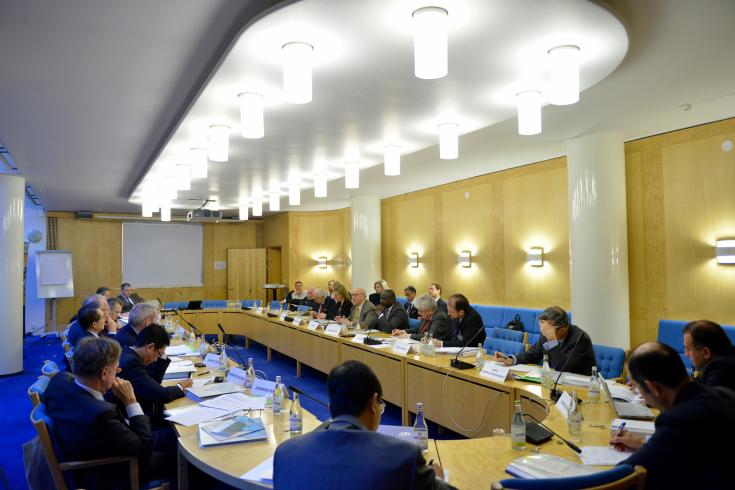
The Stockholm meeting of the GEM in April
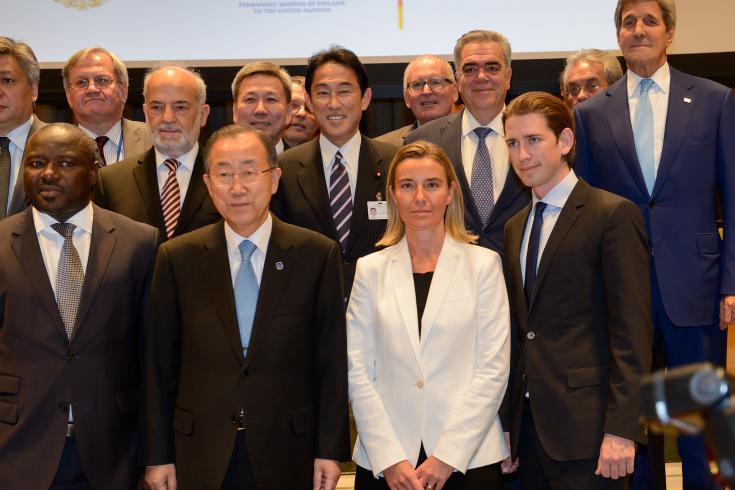
Participants at the 2014 CTBT Ministerial Meeting in September
[The CTBT] verification regime is one of the great accomplishments of the modern world. The international monitoring system is nearly complete; it is robust, it is effective, and it has contributed critical scientific data on everything from tsunami warnings to tracking radioactivity and nuclear reactor accidents.
Largest on-site inspection exercise to date
Over a period of five weeks in late 2014, the CTBTO carried out the most sophisticated simulated on-site inspection exercise to date, the Integrated Field Exercise 2014 (IFE14) in Jordan. The exercise involved some 200 international experts and a meticulous search of an inspection area of nearly 1,000 square kilometres using 15 of the 17 permissible techniques. Some of these state-of-the-art techniques were used for the first time in an on-site inspection context, including equipment to detect traces of relevant radioactive noble gases on and beneath the ground as well as from the air. Other techniques scanned the ground in frequencies invisible to the human eye.
Sampling for radioactive noble gases - the technique that eventually found the "smoking gun" evidence of a nuclear test.
Through this exercise, we have shown the world that it is absolutely hopeless to try to hide a nuclear explosion from us. We’ve now mastered all components of the verification regime, and brought our on-site inspection capabilities to the same high level as the other two components, the 90% complete network of monitoring stations and the International Data Centre.
Outlook for 2015
In June 2015, the world's largest forum for CTBT-related science and technology will convene. The next and fifth conference in the series - CTBT: Science and Technology 2015 Conference (SnT2015) - will take place from 22 to 26 June 2015 at the Hofburg Palace in Vienna, Austria. A new conference theme Performance optimization has been included. The deadline for abstract submission is 1 February 2015.
In September, the next Article XIV conference will take place during the UN ministerial week in New York to promote the entry into force of the CTBT.
In October, CTBTO station operators from its IMS monitoring facilities will gather in Vienna for the 5th Workshop on the Operation and Maintenance of the IMS.
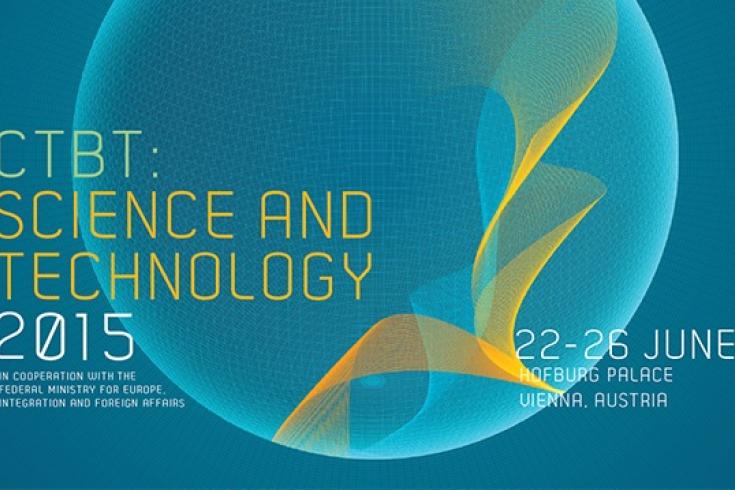
17 Dec 2014
